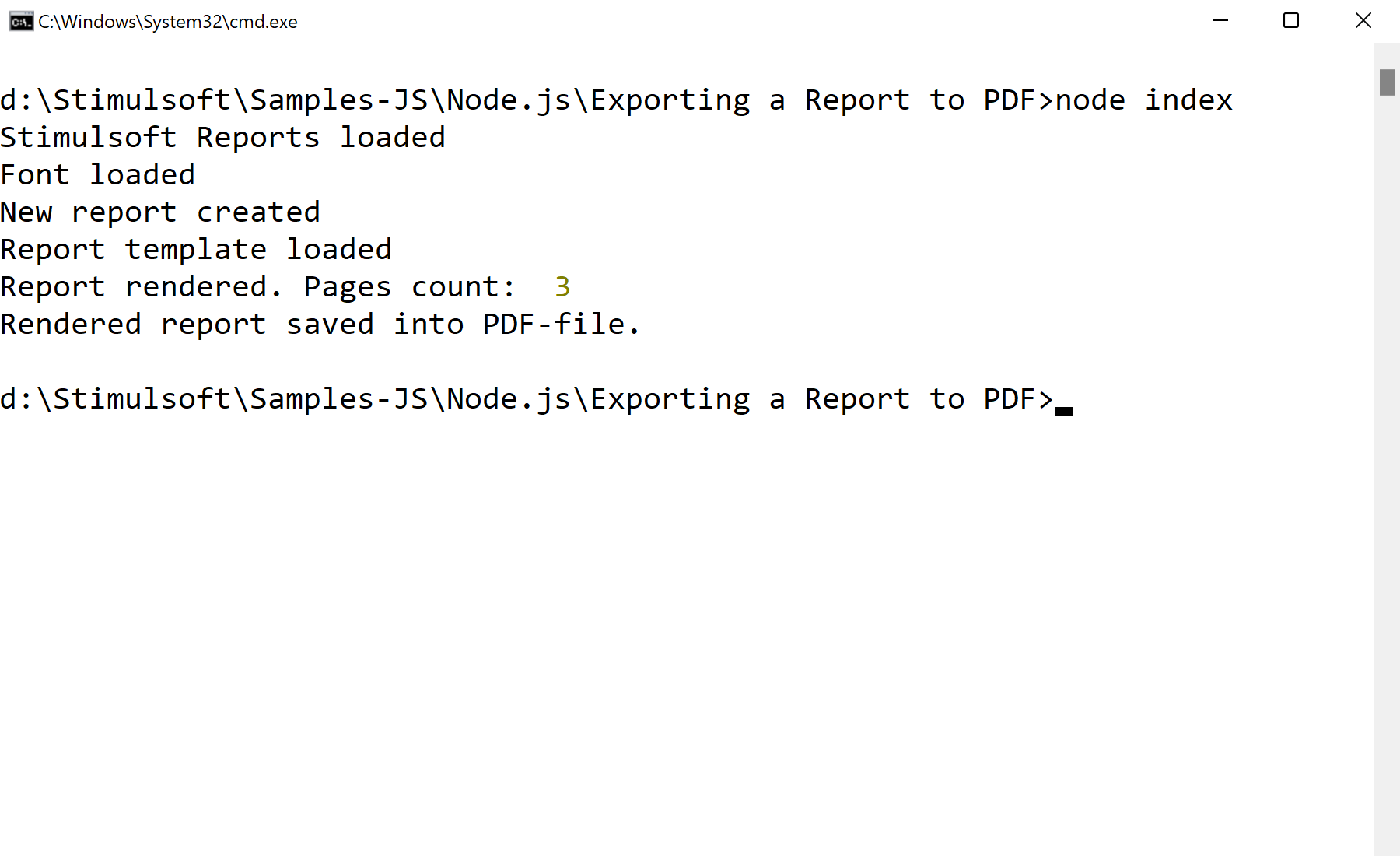This example illustrates loading of the report, data rendering and exporting the result to the PDF-document.
Installation and running Use npm to install requred modules:
$ npm install
Run Sample:
$ npm start
Step by step
Stimulsoft Reports.JS module loading:
var Stimulsoft = require('stimulsoft-reports-js');
Creating new report:
var report = new Stimulsoft.Report.StiReport();
Loading sample report template:
report.loadFile("SimpleList.mrt");
Renreding report:
report.renderAsync(() => {
// Export to PDF
report.exportDocumentAsync((pdfData) => {
// Converting Array into buffer
var buffer = Buffer.from(pdfData);
// File System module
var fs = require('fs');
// Saving string with rendered report in PDF into a file
fs.writeFileSync('./SimpleList.pdf', buffer);
console.log("Rendered report saved into PDF-file.");
}, Stimulsoft.Report.StiExportFormat.Pdf);
});
На скриншоте ниже Вы можете увидеть результат выполнения данного кода:



